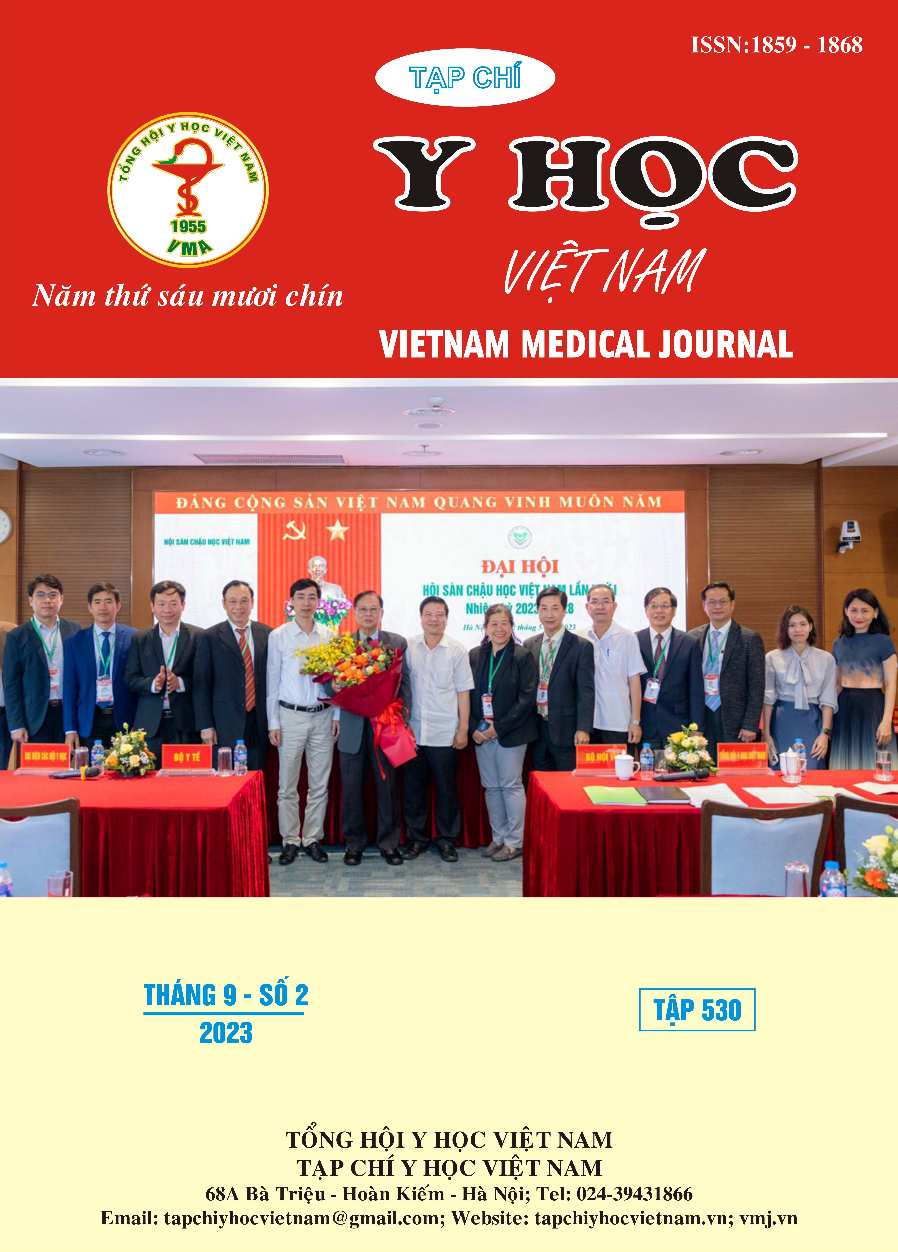CLINICAL FEATURES AND LABORATORY FOR ACUTE MYOCARDITIS SUPPORTED BY VENOARTERIAL EXTRACORPOREAL MEMBRANE OXYGENATION
Main Article Content
Abstract
Background: Acute myocarditis presents with a wide range of clinical features, from asymptonmatic to rapidly progressing acute heart failure, resulting in cardiogenic shock and life-threatening conditions. Venoarterial extracorporeal menbrane oxygenation (VA ECMO) serves as the cornerstone treatment for patients experiencing cardiogenic shock due to acute myocarditis. However, there have been changes in the clinical characteristics, laboratory findings of acute myocarditis with VA ECMO support. Objective: To describe the clinical features and laboratory findings of patients with acute myocarditis who were treated with veno – arterial extracorporeal membrane oxygenation at Cho Ray Hospital from 2019 to 2023. Patients and methods: A descriptive cross-sectional retrospective study. This study included 92 patients who diagnosed acute myocarditis and treated with extracorporeal membrane oxygenation at Cho Ray Hospital from January 2019 to March 2023. Results: The study recorded 92 cases of acute myocarditis with VA ECMO support, with a mean age of 34.2 years and males accounting for 35.9%. The median onset time of the disease was 3 days (2 - 5.5), with the most common symptoms being dyspnea (87%), followed by fever (65.2%) and chest pain (59.8%). Nine patients experienced cardiac arrest before ECMO implementation (9.8%), and four cases underwent ECMO during cardiopulmonary resuscitation (ECPR) (4.3%). Ventricular arrhythmia occurred in 23 cases (25%), and third-degree atrioventricular block was observed in 36 cases (39.1%). Measurements were recorded at three time points: before ECMO, 24 hours after ECMO, and 48 hours after ECMO. The mean blood pressure values were 68 mmHg, 75.3 mmHg, and 76.7 mmHg, respectively (p < 0.001). The vasoactive inotropic score (VIS) was 38.4, 18.9, and 14.8, respectively (p < 0.001). Blood lactate levels were 4.8 mmol/L, 2.5 mmol/L, and 2 mmol/L, respectively (p < 0.001). Conclusion: Acute myocarditis primarily affect young individuals with the most common symptoms including fever, dyspnea, and chest pain. Acute myocarditis can progress rapidly, characterized by the early onset of severe complications within the initial days of the disease. VA ECMO is effective in providing hemodynamic support and organ perfusion. Early initiation of VA ECMO can help reduce the incidence of cardiac arrest before ECMO and ECPR, and decrease organ injury severity.
Article Details
Keywords
acute myocarditis, cardiogenic shock, extracorporeal membrane oxygenation.
References
2. Hao T, Jiang Y, Wu C, et al. Clinical outcome and risk factors for acute fulminant myocarditis supported by venoarterial extracorporeal membrane oxygenation: An analysis of nationwide CSECLS database in China. Int J Cardiol. 2023; 371:229-235. doi:10.1016/j.ijcard.2022.09.055
3. Wang D, Li S, Jiang J, et al. Chinese society of cardiology expert consensus statement on the diagnosis and treatment of adult fulminant myocarditis. Sci China Life Sci. 2019;62(2):187-202. doi:10.1007/s11427-018-9385-3
4. Lê Nguyên Hải Yến, Phan Thị Xuân, Phạm Thị Ngọc Thảo. Hiệu quả và biến chứng của kỹ thuật oxy hóa máu qua màng ngoài cơ thể phương thức động - tĩnh mạch (V-A ECMO) trong điều trị cứu vãn viêm cơ tim cấp. Tạp Chí Học Thành Phố Hồ Chí Minh. 2018;22(2). Accessed August 5, 2022. https://yhoctphcm.ump.edu.vn/ ?Content=ChiTietBai&idBai=15983
5. Ho CL, Ju TR, Lee CC, et al. The Early Dynamic Change in Cardiac Enzymes and Renal Function Is Associated with Mortality in Patients with Fulminant Myocarditis on Extracorporeal Membrane Oxygenation: Analysis of a Single Center’s Experience. Healthcare. 2022; 10(6):1063. doi:10.3390/healthcare10061063
6. Liu C, Wang Z, Chen K, et al. The absolute and relative changes in high-sensitivity cardiac troponin I are associated with the in-hospital mortality of patients with fulminant myocarditis. BMC Cardiovasc Disord. 2021;21(1):571. doi:10.1186/s12872-021-02386-8
7. Peretto G, Sala S, Rizzo S, et al. Arrhythmias in myocarditis: State of the art. Heart Rhythm. 2019; 16(5):793-801. doi:10.1016/j.hrthm.2018.11.024


